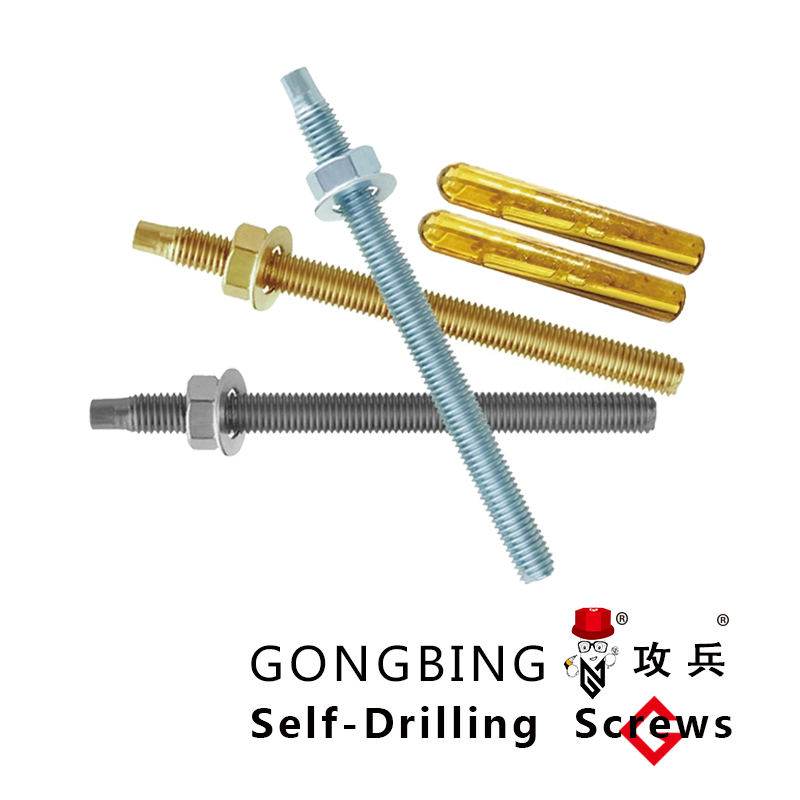Self-Drilling Anchors for Easy Drywall Installations and Secure Fixings
Self-Drilling Drywall Anchor Fixing The Ultimate Guide
When it comes to hanging shelves, picture frames, or any other decorative items on drywall, the crucial component that ensures stability is the anchor. Among various types of anchors available, self-drilling drywall anchors have gained immense popularity for their ease of use and reliability. This article explores the benefits, types, and installation process of self-drilling drywall anchors, ensuring you have the knowledge to secure your items effectively.
What are Self-Drilling Drywall Anchors?
Self-drilling drywall anchors are specialized fasteners designed to secure objects to drywall without the need for pre-drilling holes. Constructed from durable materials like metal or heavy-duty plastic, these anchors are equipped with sharp, self-tapping threads that allow them to penetrate drywall easily. One of the key advantages of self-drilling anchors is that they can support various loads, making them versatile for different applications.
Benefits of Using Self-Drilling Drywall Anchors
1. Ease of Installation One of the most significant advantages of self-drilling anchors is their simplicity. They can be installed with just a screwdriver, eliminating the need for additional tools like drills. This makes the problem of wall mounting more approachable for DIY enthusiasts and even those new to home improvement.
2. Strong Support Self-drilling anchors can hold significant weight compared to traditional plastic anchors. Many are rated for loads between 30 to 50 pounds, depending on the specific product and installation method. This means they can securely hold heavy items such as cabinets or large mirrors, provided they are installed correctly.
3. Less Wall Damage Unlike other anchors that may require drilling and create larger holes in the wall, self-drilling anchors leave minimal damage and can be easily removed if necessary. This is a significant advantage for renters or anyone looking to maintain the integrity of their walls.
4. Versatility Self-drilling anchors are suitable for various materials in addition to drywall, including plywood and other solid substrates. This versatility makes them a go-to choice for different installation needs.
Types of Self-Drilling Drywall Anchors
There are several types of self-drilling anchors, each designed for specific applications
self drilling drywall anchor fixing

- Metal Self-Drilling Anchors These are robust and ideal for heavy-duty applications
. They are often used for mounting shelves or heavy frames and can hold more weight compared to plastic variants.- Plastic Self-Drilling Anchors Lighter in nature, plastic anchors are perfect for lighter loads such as small picture frames or home decor items. They are easy to install and come in various sizes.
- Toggle Bolts While not strictly self-drilling, toggle bolts are often grouped with these anchors. They consist of a bolt and a winged toggle that expands behind the wall, providing strong support for heavier items.
Installation Process
Installing self-drilling drywall anchors is straightforward
1. Select the Right Anchor Choose an anchor suitable for the weight of the item you plan to hang.
2. Mark the Spot Use a pencil to mark where you want to place the anchor.
3. Screw the Anchor In Align the anchor with the mark and use a screwdriver to turn the anchor clockwise until it is flush with the wall.
4. Attach Your Item Once the anchor is secured, insert the screw into the anchor and attach your item.
In conclusion, self-drilling drywall anchors provide an efficient and reliable solution for mounting various items on drywall. Their ease of use, strong support, and minimal wall damage make them a favorite among homeowners and DIY enthusiasts alike. Whether you’re hanging a simple picture or a heavy shelf, these anchors offer the perfect combination of strength and convenience, ensuring your home is both stylish and functional.
-
Weatherproof Plastic Expansion Anchors for OutdoorNewsJun.06,2025
-
Sustainability in the Supply Chain: Eco-Friendly TEK Screws ProductionNewsJun.06,2025
-
Load-Bearing Capacity of External Insulation FixingsNewsJun.06,2025
-
Double Head Bolts: Enhancing Efficiency in Industrial MachineryNewsJun.06,2025
-
Corrosion Resistance in Chipboard Screws: Coatings for Wholesale DurabilityNewsJun.06,2025
-
Butterfly Toggle Bolts : Enhancing Structural ResilienceNewsJun.06,2025
